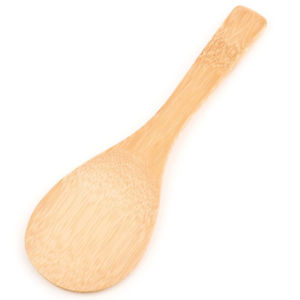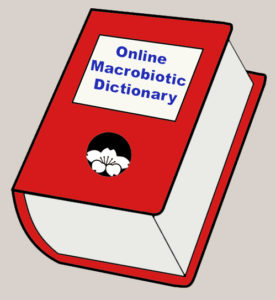
Completed Entries
Large, irregular diagonal wedge cutting style for vegetables.
Estimated amount of nutrients and calories needed daily for good health as determined by the Institute of Medicine (IOM) of the National Academy of Sciences (United States)—established in 1997 to expand existing guidelines. These figures are determined by studies where possible and by guess based on the amounts healthy-seeming people consume daily when studies are unavailable. They are based on people who eat a standard American diet. The World Health Organization RDAs are more appropriate for people eating a grain-and-vegetable-based diet guided by macrobiotic principles.
Lotus root.
The outer hull of brown rice, removed in the process of making white rice. It is used for making pickles and for healing baths.
Rice bran in a cotton bag soaked in hot water used like a sponge bath for skin problems.
See Cautionary note.
Boiled rice bran water used as a compress for itchy skin or allergies.
See Cautionary note.
Water from boiled rice bran used as a full bath for skin problems.
See Cautionary note.
Heated rice bran wrapped in cotton or placed in a cotton bag and used as a massage for severe frostbite.
See Cautionary note.
Rice bran (nuka) and water made into a paste-like consistency and used for inflamed hands or feet or broken bones.
See Cautionary note.

A flat, wooden tool used to serve rice.
Cooked white or brown rice used as a plaster for sprained ankles or bruises.
See Cautionary note.
Natural sweetener made from milled rice, barley, and koji enzyme. Also referred to as yinnie syrup or yinnie rice syrup.
Juice from chopped daikon in rice syrup used as a drink for coughs.
See Cautionary note.
Seasoning made from whole-grain brown rice and water, aged for three years, and then filtered through cotton. Make certain the kind you buy contains only these ingredients.
Refined oils go through a multi-step (high-tech) process during which the oil is heated and toxic chemical solvents and bleaches are used. This increases the oils’ shelf life but reduces color, flavor, and nutrients. The high temperatures during processing oxidize the oil which creates free radicals that can damage body cells. Thus, macrobiotic thinkers agree with many health advocates that refined oils are unhealthy and advise using only unrefined oils.
Type of alcohol (usually isopropyl) used exclusively for external purposes.
This is a difficult concept for most people to understand. Ohsawa felt that the first step in healing any disorder is to search for and recognize one’s own actions that contributed to the disease. The second step is to find the underlying cause of the disorder and to work on that rather than merely curing only the symptoms of it.
Projected Entries
Radish drink
Ramen
Ralston, Dr. Norman
Ransho
Recipes
Red miso
Red rice
Red snapper
Religions
Resume
Retina, detachment of
Return to Nature
Rheumatism
Rice balls
Rice bran bag
Rice cakes
Rice kayu bread
Rice, brown
Rice, raw
Rickets
Rigidity
Riviére, Francoise
Roles
Rolled oats
Round worms
Rye
Questions or Comments?




